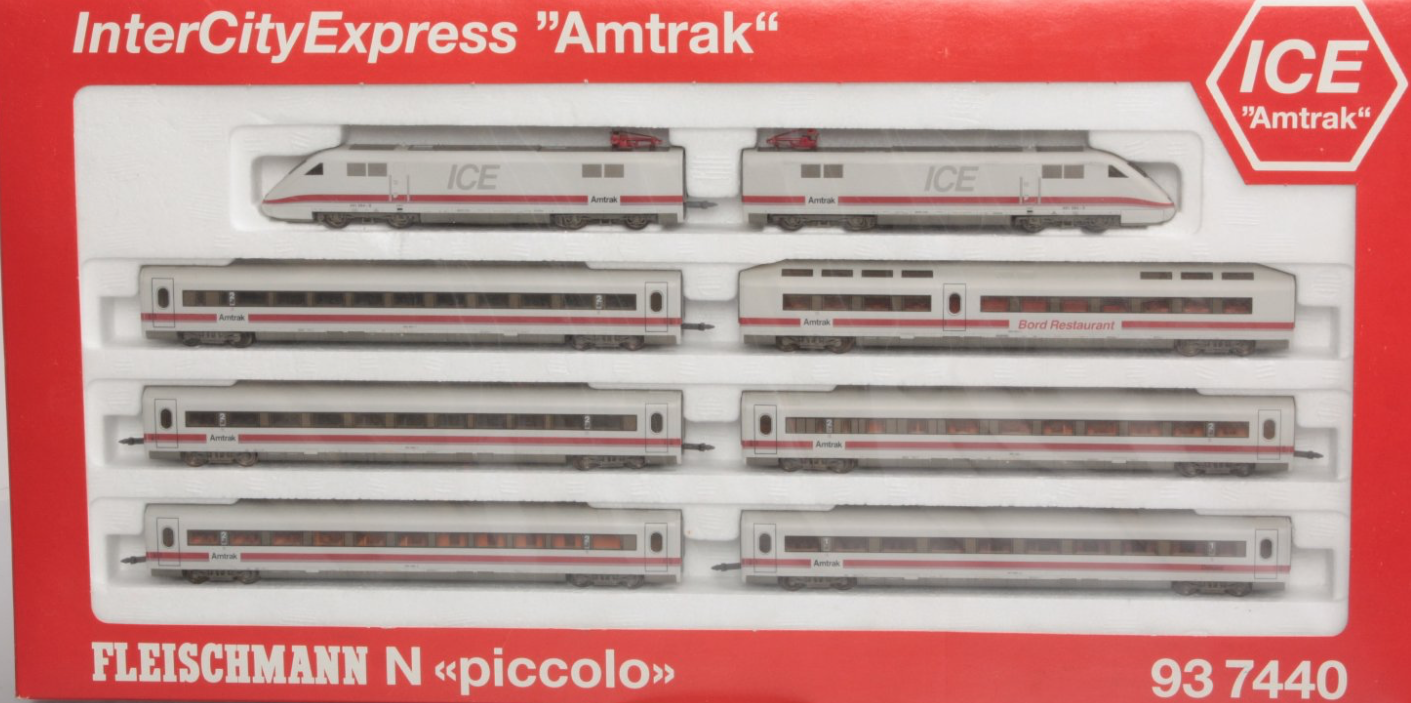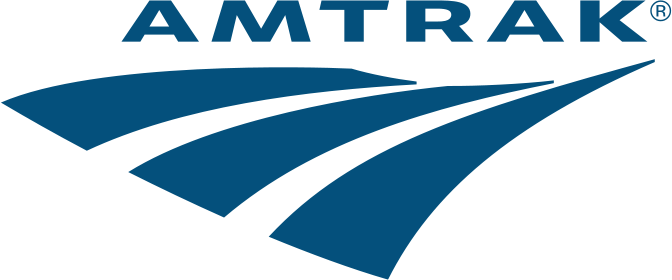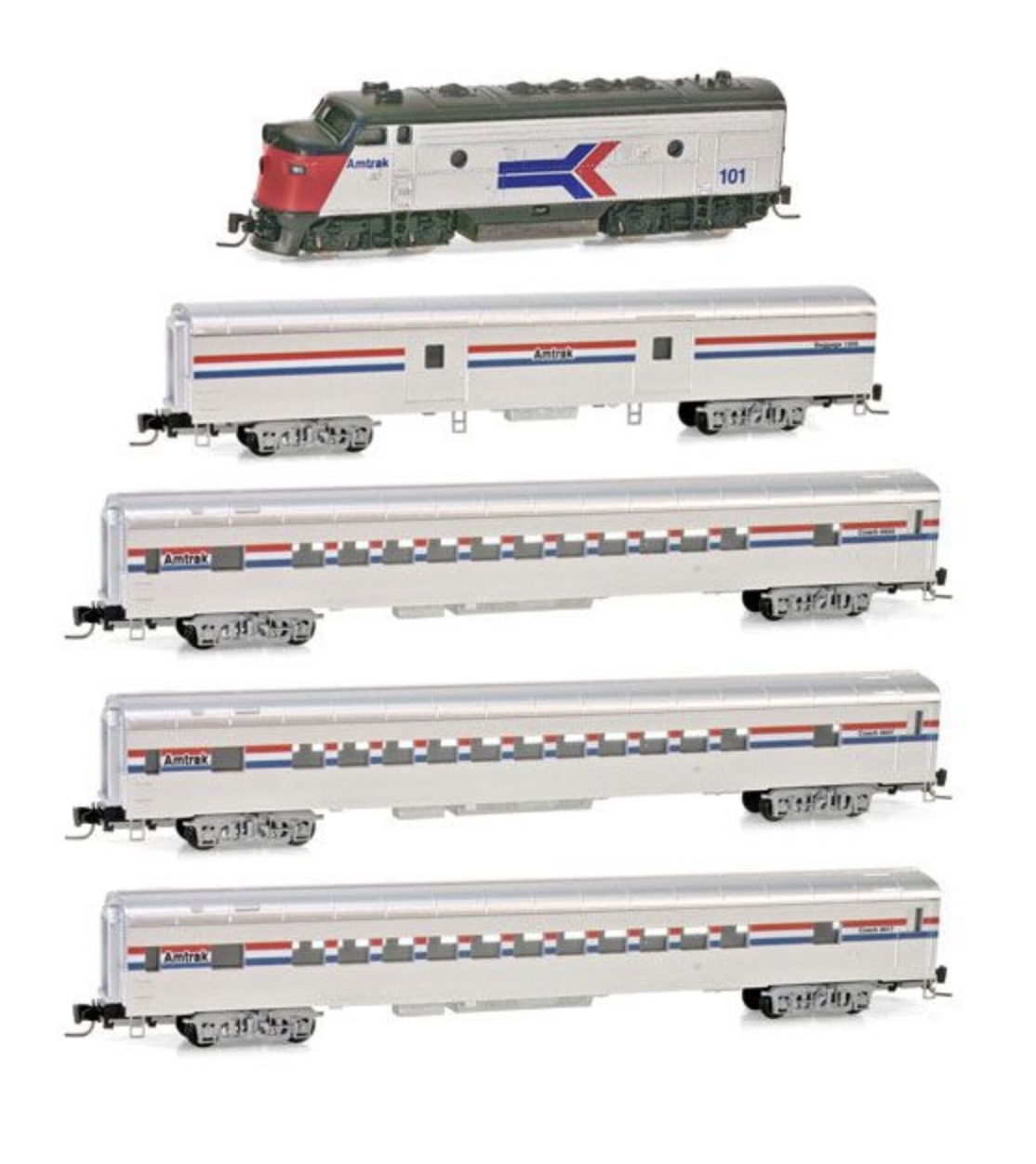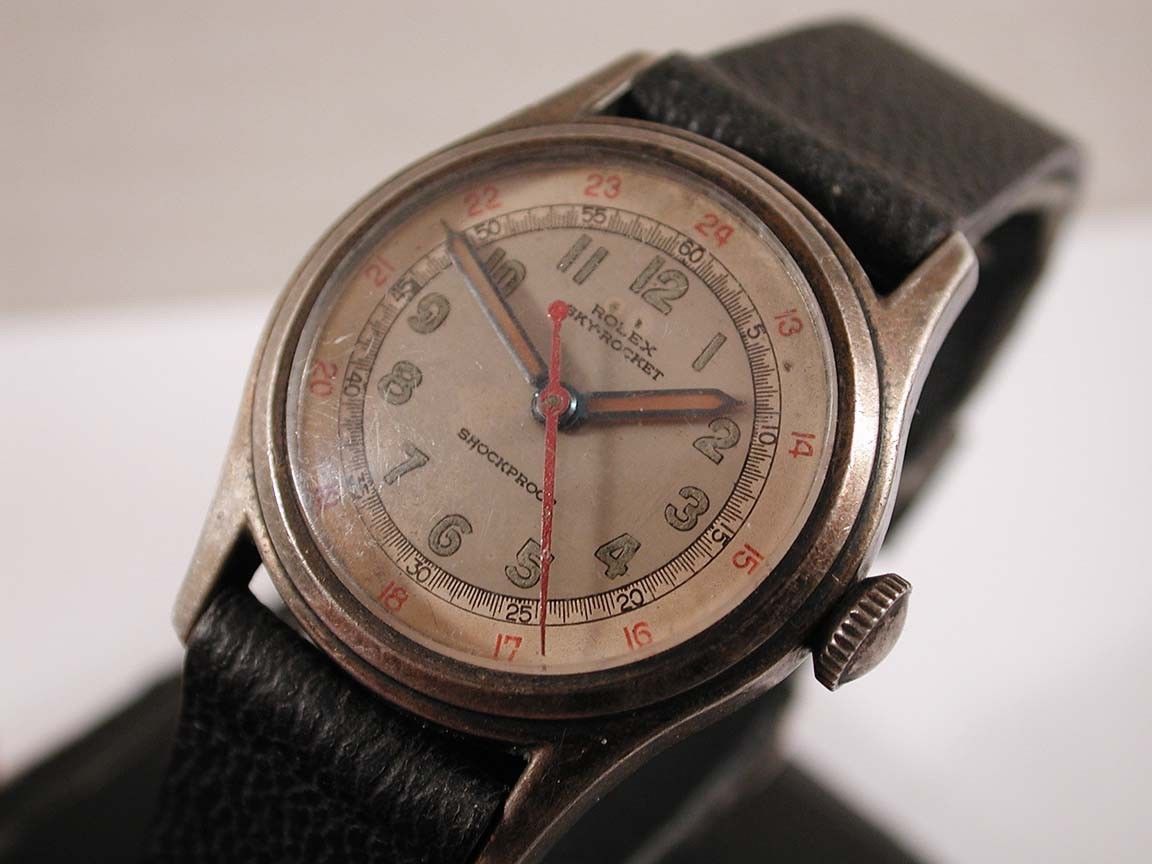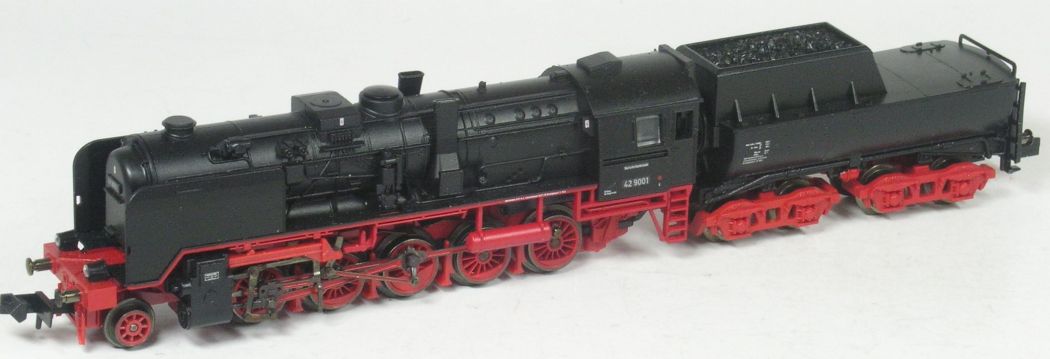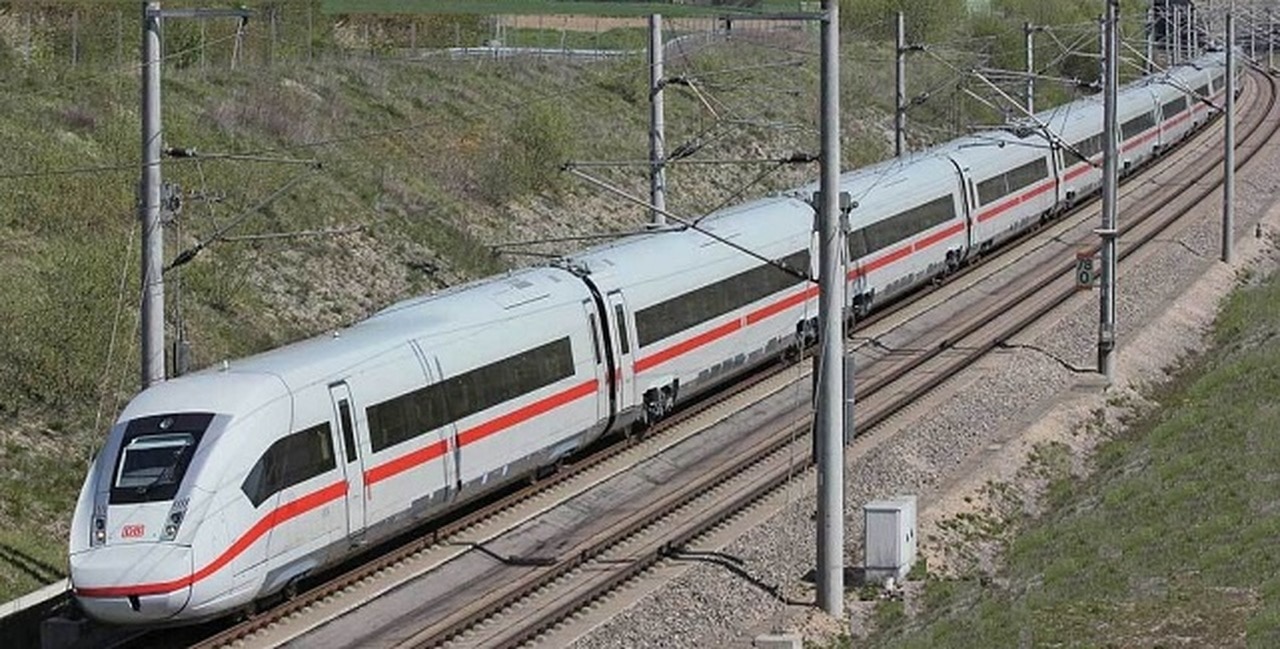Specific Item Information: This model represents the demonstration ICE 1 that ran in the USA from July 1 to December 15, 1993. More on this this site.
The set contains six carriages and two locomotives (one powered and one dummy). All carriages have full interior detail. Both locomotives have working pantographs, although they can draw current from the rails as well (there being a switch on the bottom of each motive unit that allows one to change it from track-power draw to overhead-power draw). The pantographs are both sprung and moveable. The chassis is all-metal, although not split-frame (it does not conduct current). Rather, current is routed around via a series of PC boards and metal tabs. The motor is an open-sided 3-poler. All wheels are geared, although only six of the eight provide pickup (with each truck having one traction-tire equipped wheel). Both locomotives (IE, the dummy too) have directional lighting, which changes from white to red when switching from forward to reverse. Unfortunately, the wheel flanges are a bit oversized (IE, forget about running this train on Code-55 rails).
The set contains six carriages and two locomotives (one powered and one dummy). All carriages have full interior detail. Both locomotives have working pantographs, although they can draw current from the rails as well (there being a switch on the bottom of each motive unit that allows one to change it from track-power draw to overhead-power draw). The pantographs are both sprung and moveable. The chassis is all-metal, although not split-frame (it does not conduct current). Rather, current is routed around via a series of PC boards and metal tabs. The motor is an open-sided 3-poler. All wheels are geared, although only six of the eight provide pickup (with each truck having one traction-tire equipped wheel). Both locomotives (IE, the dummy too) have directional lighting, which changes from white to red when switching from forward to reverse. Unfortunately, the wheel flanges are a bit oversized (IE, forget about running this train on Code-55 rails).
Prototype History: The Intercity-Express (formerly InterCityExpress and commonly known as ICE (pronounce each letter individually)) is a system of high-speed trains predominantly running in Germany, Austria, Denmark, France, Belgium, and Switzerland. It is the highest service category of rail offered in Europe and is the flagship train of the German state railway, Deutsche Bahn. There are currently 259 trainsets in use.
The ICE rolling stock is made of 4 generations with different characteristics, but they all share the fact that each car is having two bogies, unlike the French TGV that is fitted with shared bogies between the intermediate cars.
- Data sheets of all ICEs (2019) (or latest versions on DB website)
- ICE network map (2019) (or latest versions on DB website)
The ICE rolling stock is made of 4 generations with different characteristics, but they all share the fact that each car is having two bogies, unlike the French TGV that is fitted with shared bogies between the intermediate cars.
- ICE 1 (power car class 401) was built by a consortium of companies (Krauss-Maffei, Krupp, Henschel, AEG, ABB, Siemens). It has two power cars at each end and a number of intermediate cars. Given its single 15 kV 16-2/3 Hz AC power input, and a gauge larger than UIC standards, it can merely circulate inside Germany and a few other neighboring countries using this voltage.
- ICE 2 (power car class 402) is a an improvement of ICE 1, but sharing the same limitations in terms of power input and gauge.
- ICE 3 (class 403 / 406) based on Siemens Velaro high-speed train, is a departure from the previous ICE design, with a lower gauge and multiple power input capabilities that make it compatible with international travel, including the UK through the channel tunnel. Contrary to its predecessors, it has electrical motors spread over the whole consist instead of the more classical end power cars.
- ICE 4 (class 412) is the latest generation, jointly built by Siemens and Bombardier. It started commercial operation in 2017. It will progressively replace the ageing ICE 1 and ICE 2.
- Data sheets of all ICEs (2019) (or latest versions on DB website)
- ICE network map (2019) (or latest versions on DB website)
Road Name History: The National Railroad Passenger Corporation, doing business as Amtrak, is a passenger railroad service that provides medium- and long-distance intercity service in the contiguous United States. Founded in 1971 through the government-sponsored consolidation of most of the remaining U.S. passenger rail companies, it is partially government-funded yet operated and managed as a for-profit corporation.
Amtrak operates more than 300 trains each day on 21,300 miles (34,000 km) of track with select segments having civil operating speeds of 150 mph (240 km/h) and connecting more than 500 destinations in 46 states in addition to three Canadian provinces. In fiscal year 2015, Amtrak served 30.8 million passengers and had $2.185 billion in revenue, while employing more than 20,000 people. Nearly two-thirds of passengers come from the 10 largest metropolitan areas; 83% of passengers travel on routes shorter than 400 miles. Its headquarters is at Union Station in Washington, D.C.
The name "Amtrak" is a portmanteau of the words "America" and "trak", the latter itself a sensational spelling of "track".
Read more on Wikipedia.
Amtrak operates more than 300 trains each day on 21,300 miles (34,000 km) of track with select segments having civil operating speeds of 150 mph (240 km/h) and connecting more than 500 destinations in 46 states in addition to three Canadian provinces. In fiscal year 2015, Amtrak served 30.8 million passengers and had $2.185 billion in revenue, while employing more than 20,000 people. Nearly two-thirds of passengers come from the 10 largest metropolitan areas; 83% of passengers travel on routes shorter than 400 miles. Its headquarters is at Union Station in Washington, D.C.
The name "Amtrak" is a portmanteau of the words "America" and "trak", the latter itself a sensational spelling of "track".
Read more on Wikipedia.
Brand/Importer Information: As a high-quality company we set the standard when it comes to prototype fidelity and functionality. Our aim is to enthrall novices and experts alike and to be the enduring long-term partner for a fascinating hobby that spans all generations. We achieve this with the true-to-detail design and the reliability of our models and with innovations that offer a new dimension in the play value and fun factor. The high commitment to quality that has characterised Fleischmann for more than 125 years has ensured our company?s position as an internationally leading brand for model railways.
Small-scale greatness. Its comprehensive range in the N scale makes Fleischmann the international market leader in this sector. There are over 350 highly detailed models to choose from in the space-saving 9-mm gauge. Continuous and targeted extension of the range will allow Fleischmann to expand its competitive edge in the future.
Small-scale greatness. Its comprehensive range in the N scale makes Fleischmann the international market leader in this sector. There are over 350 highly detailed models to choose from in the space-saving 9-mm gauge. Continuous and targeted extension of the range will allow Fleischmann to expand its competitive edge in the future.
Item created by: CNW400 on 2020-02-15 10:15:56. Last edited by CNW400 on 2020-07-22 12:57:32
If you see errors or missing data in this entry, please feel free to log in and edit it. Anyone with a Gmail account can log in instantly.
If you see errors or missing data in this entry, please feel free to log in and edit it. Anyone with a Gmail account can log in instantly.


